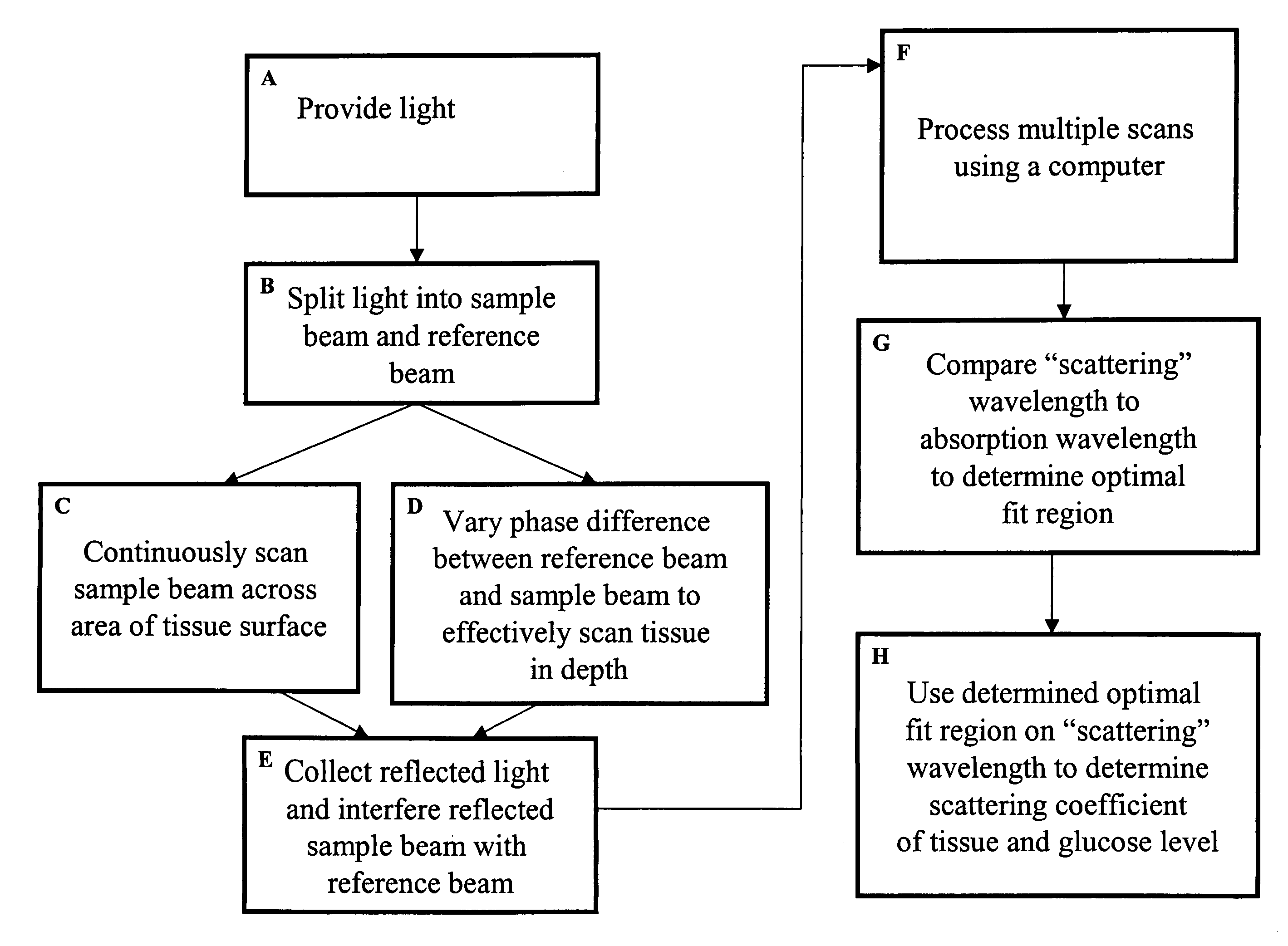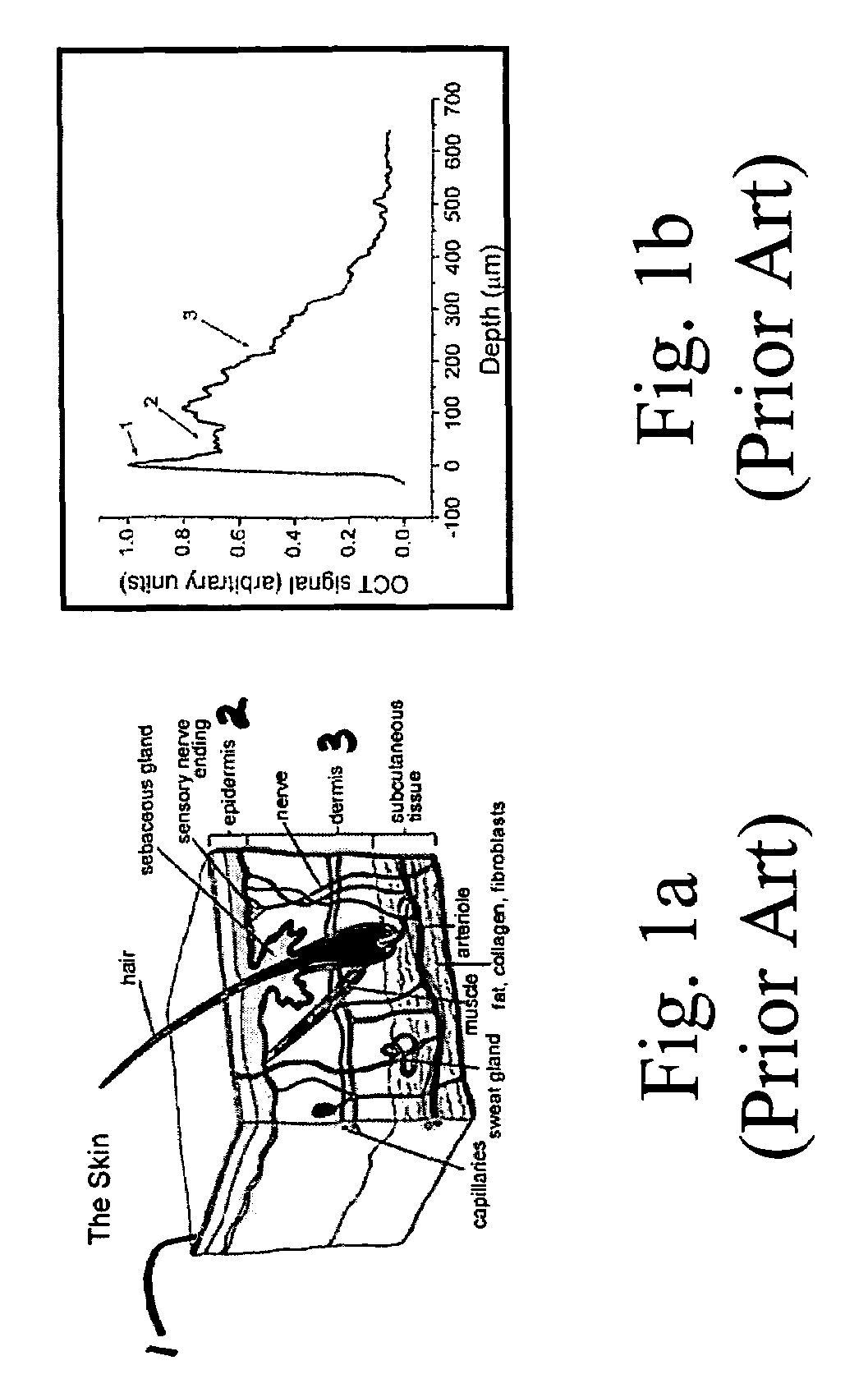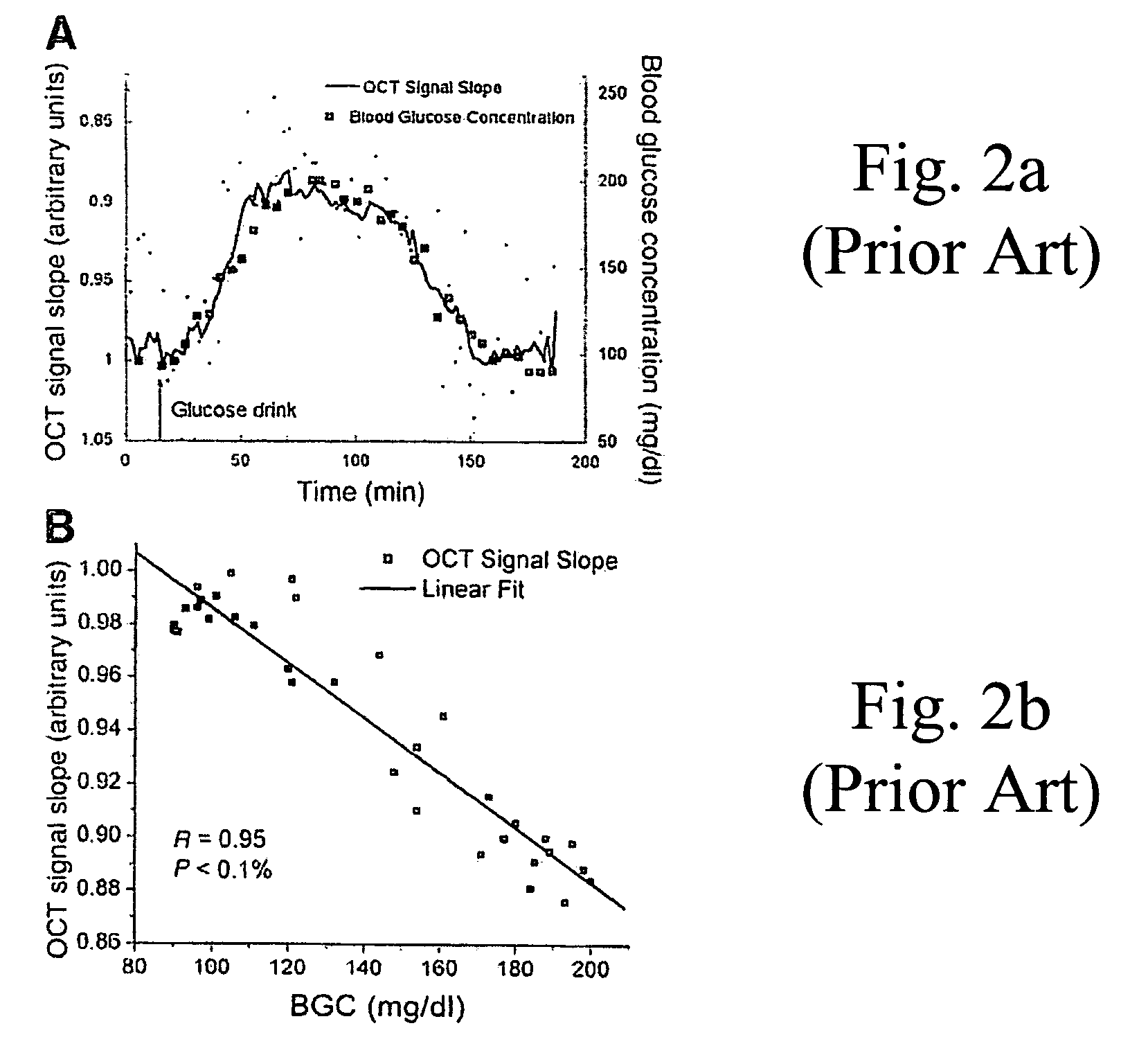Method and apparatus for monitoring glucose levels in a biological tissue
a biological tissue and glucose level technology, applied in the field of biological tissue glucose level monitoring methods and apparatuses, can solve the problems of serious medical complications, low compliance, and low level of compliance, and achieve the effects of reducing noise or speckle, and measurable differences in scattering properties
- Summary
- Abstract
- Description
- Claims
- Application Information
AI Technical Summary
Benefits of technology
Problems solved by technology
Method used
Image
Examples
Embodiment Construction
[0018]FIG. 1a is a schematic cross section of the skin showing the skin surface 1, the epidermis layer 2 and the dermis layer 3. Various additional structures are labeled. Some structures, such as hair and its associated follicles, scatter light in a manner unrelated to glucose concentration. Other regions, such as regions in the dermis near the capillaries are profused with blood and IF (blood profused tissues) and light scattered from these regions is highly correlated with glucose concentration.
[0019]FIG. 1b graphically illustrates light scattered within the skin as a function of depth. Region 1 of the curve corresponds to light reflected from the skin surface. Region 2 shows light scattered within the epidermis, and Region 3 is light scattered from the dermis. As we will show, slope of the curve at depths where the tissue is profused with blood (e.g. near the capillaries) is highly correlated with blood glucose levels.
[0020]FIG. 2a graphically plots the slope of the optical sign...
PUM
 Login to View More
Login to View More Abstract
Description
Claims
Application Information
 Login to View More
Login to View More - R&D
- Intellectual Property
- Life Sciences
- Materials
- Tech Scout
- Unparalleled Data Quality
- Higher Quality Content
- 60% Fewer Hallucinations
Browse by: Latest US Patents, China's latest patents, Technical Efficacy Thesaurus, Application Domain, Technology Topic, Popular Technical Reports.
© 2025 PatSnap. All rights reserved.Legal|Privacy policy|Modern Slavery Act Transparency Statement|Sitemap|About US| Contact US: help@patsnap.com



